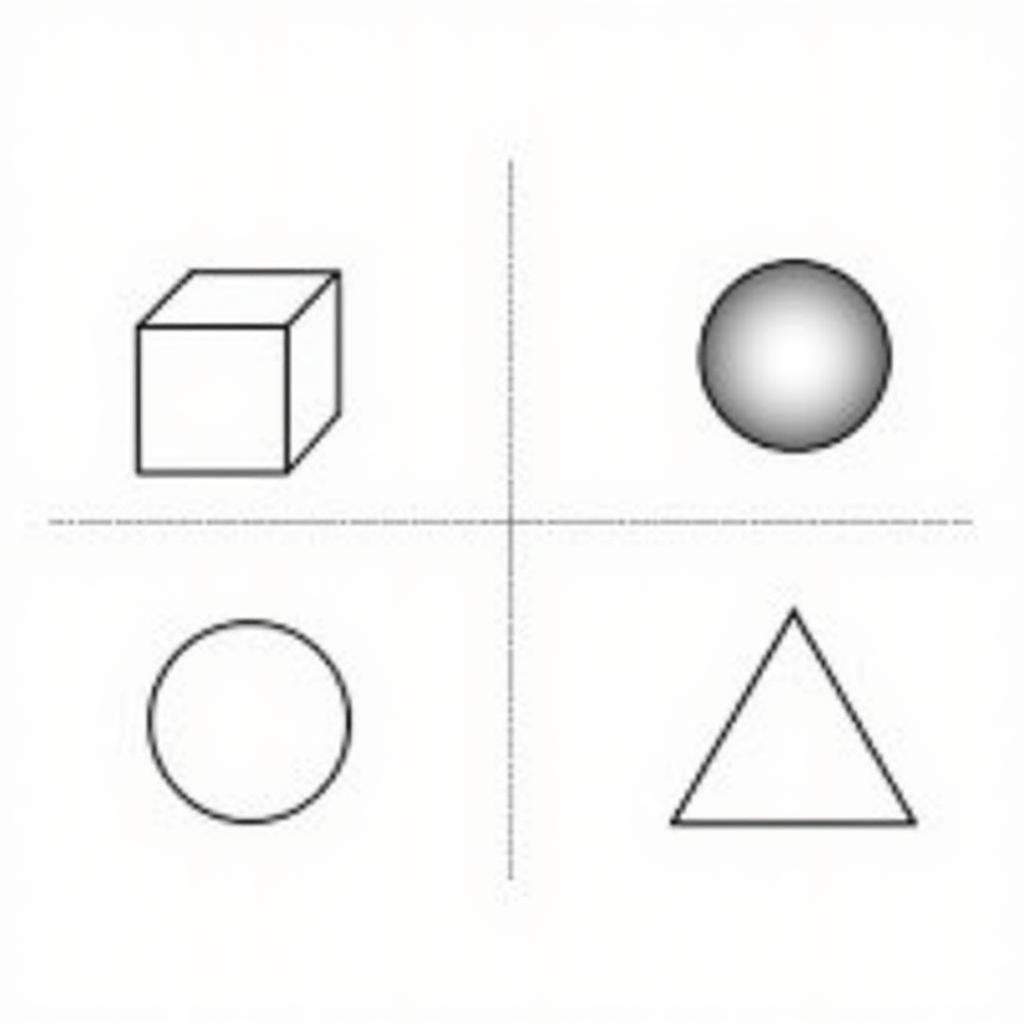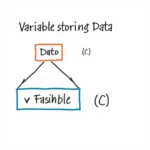“Hình Học Không Gian In English” – a phrase that sparks curiosity for many Vietnamese students venturing into the world of higher-level mathematics. This guide unlocks the secrets of spatial geometry vocabulary and concepts, empowering you to confidently navigate this fascinating field in English.
Unraveling Spatial Geometry Terminology
Mastering spatial geometry in English starts with building a strong vocabulary. Key terms like “point,” “line,” “plane,” “solid,” and “space” form the bedrock of this subject. hình học không gian trong tiếng anh helps you translate these fundamental concepts accurately. Beyond the basics, understanding specific 3D shapes is crucial. Familiarize yourself with “cube,” “sphere,” “cone,” “cylinder,” “prism,” and “pyramid” in English.
Exploring Key Concepts in English
Now that you’ve grasped the basic vocabulary, let’s dive into essential concepts. “Volume” and “surface area” are two crucial calculations in spatial geometry. Remember, volume refers to the space a 3D shape occupies, while surface area represents the total area of its outer surfaces. Other important concepts include “vertices,” “edges,” and “faces,” which describe the components of 3D shapes. dạy học tiếng anh online can provide further support in understanding these concepts.
Applying Spatial Geometry in Real-World Scenarios
Spatial geometry isn’t just theoretical; it’s highly applicable in the real world. Think of architects designing buildings, engineers constructing bridges, or even video game developers creating 3D environments. They all rely on principles of spatial geometry.
- Architecture: Calculating the volume of a building to determine its capacity.
- Engineering: Determining the surface area of a bridge to estimate the amount of material needed.
- Video game design: Using 3D modeling software to create realistic objects and environments.
Tips for Mastering “Hình Học Không Gian in English”
 Mẹo học hình học không gian tiếng Anh
Mẹo học hình học không gian tiếng Anh
Learning “hình học không gian in English” requires a structured approach. chương trình toán hình học lớp 9 can be a good starting point to solidify your understanding of basic geometry. Here are some effective learning strategies:
- Flashcards: Create flashcards with English terms on one side and Vietnamese translations or definitions on the other.
- Practice Problems: Solve various spatial geometry problems using English resources.
- Visual Aids: Utilize diagrams and visual representations to understand 3D shapes and concepts.
- Online Resources: Explore online platforms like 10 trang web học tiếng anh hay nhất for interactive learning experiences.
- Pronunciation Practice: Focus on correct pronunciation of geometrical terms with the help of resources like giáo trình học phát âm tiếng anh.
“Understanding the fundamentals is crucial,” advises Dr. Nguyen Thi Lan, a prominent math educator. “Focus on building a solid foundation in both geometry and English.”
“Consistent practice is key to mastering any subject, especially when learning it in a new language,” adds Professor Tran Van Minh, a renowned linguist.
Conclusion: Embracing the World of Spatial Geometry in English
Mastering “hình học không gian in English” opens doors to advanced learning and exciting career opportunities. By embracing these strategies and resources, you can confidently navigate the world of 3D shapes and concepts in English.
Khi cần hỗ trợ hãy liên hệ Số Điện Thoại: 0705065516, Email: thptquangtrung@gmail.com Hoặc đến địa chỉ: NB tổ 5/110 KV bình thường b, P, Bình Thủy, Cần Thơ, Việt Nam. Chúng tôi có đội ngũ chăm sóc khách hàng 24/7.

